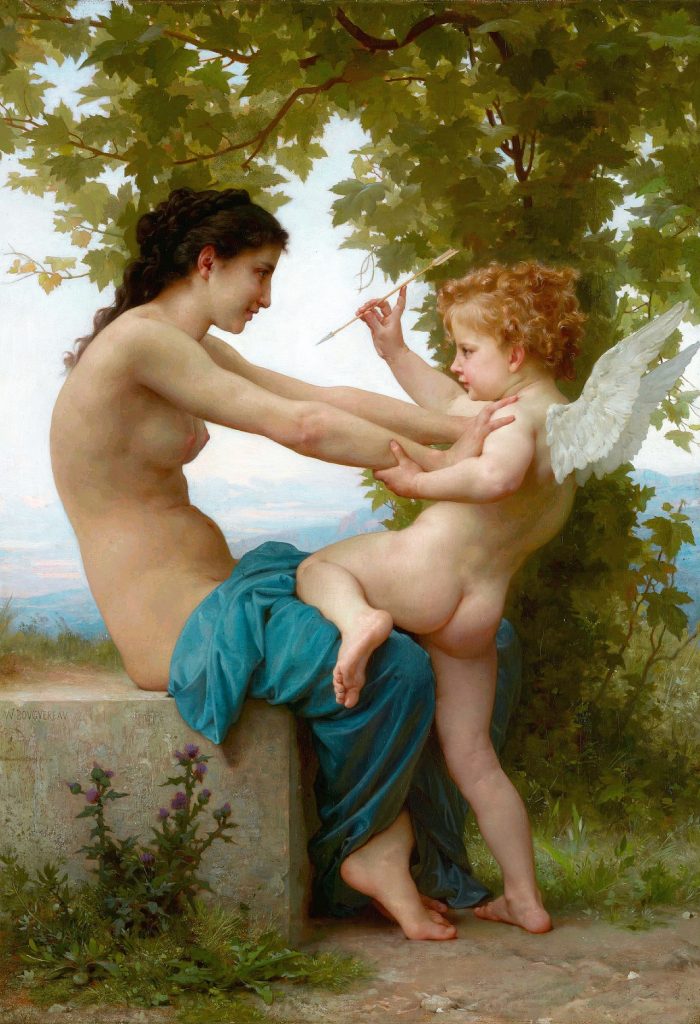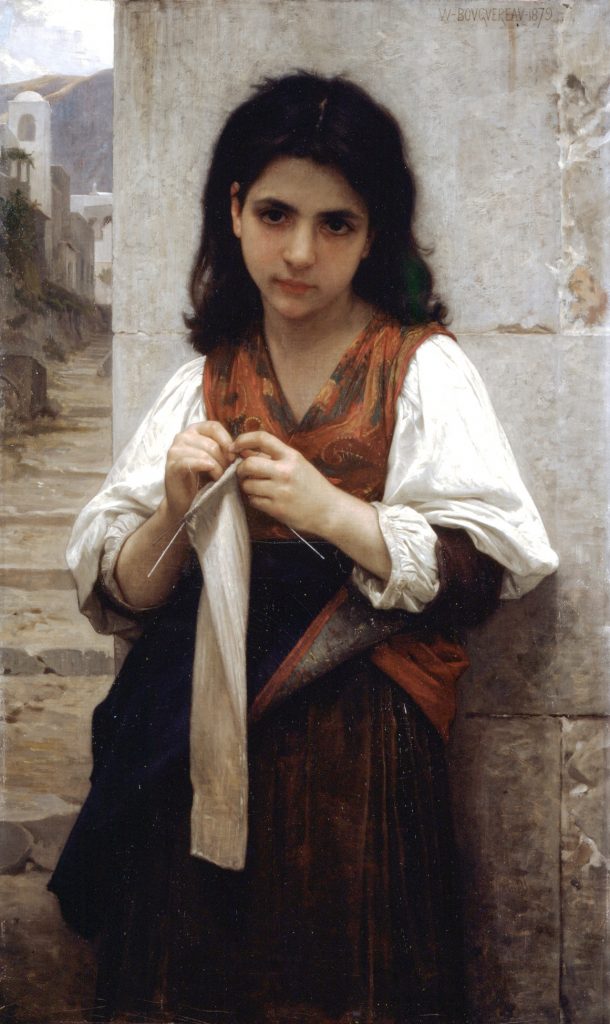
William-Adolphe Bouguereau (1825-1905) was a highly regarded French academic painter who achieved great success and acclaim during the 19th century. He is best known for his meticulously crafted, highly detailed, and emotionally expressive paintings, which often featured mythological, historical, religious, and genre subjects. Here’s a biography of William-Adolphe Bouguereau:
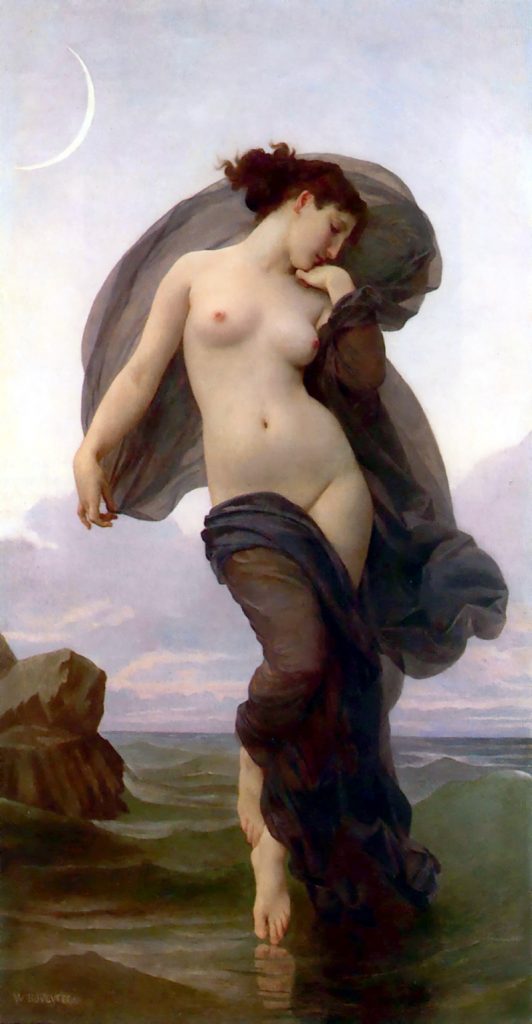
Early Life and Education:
- Bouguereau was born on November 30, 1825, in La Rochelle, France. He displayed a talent for drawing at a young age and began his artistic education in Bordeaux.
- In 1846, he moved to Paris to continue his studies at the prestigious École des Beaux-Arts, where he trained under François-Édouard Picot.
- Bouguereau also traveled to Italy to study the works of the Old Masters, which had a profound influence on his artistic style.
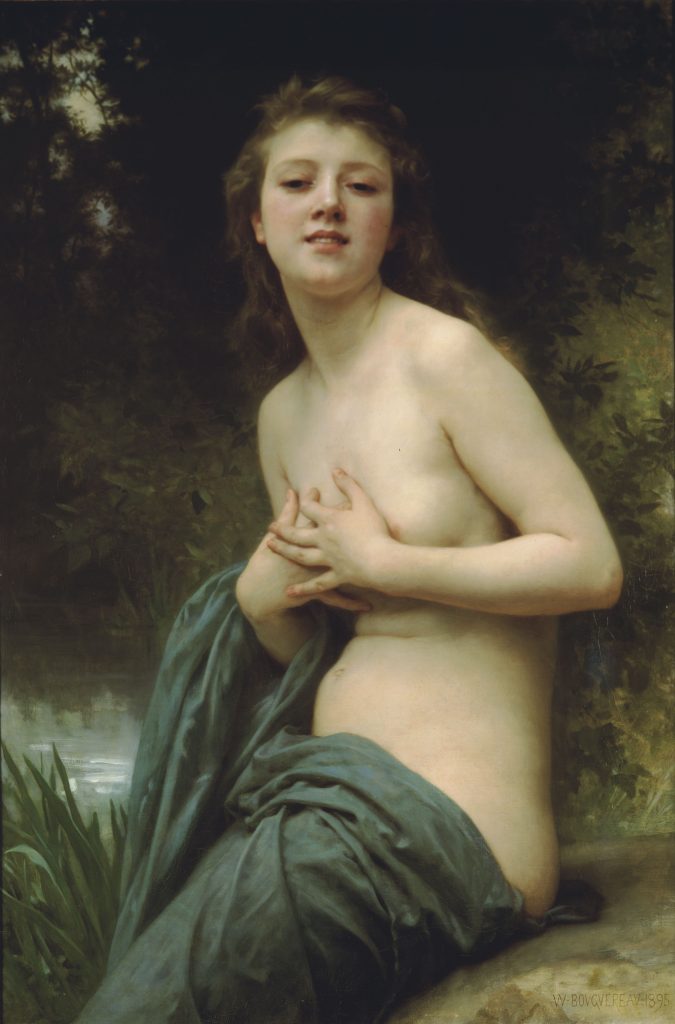
Artistic Style and Influences:
- Bouguereau’s artistic style was firmly rooted in the academic tradition. He excelled in classical draftsmanship and the careful rendering of anatomical accuracy.
- His works often featured smooth, polished surfaces, delicate transitions of light and shadow, and a focus on the idealized human form.
- The influence of Renaissance and Baroque painters, such as Raphael and Guido Reni, is evident in his compositions and subject matter.
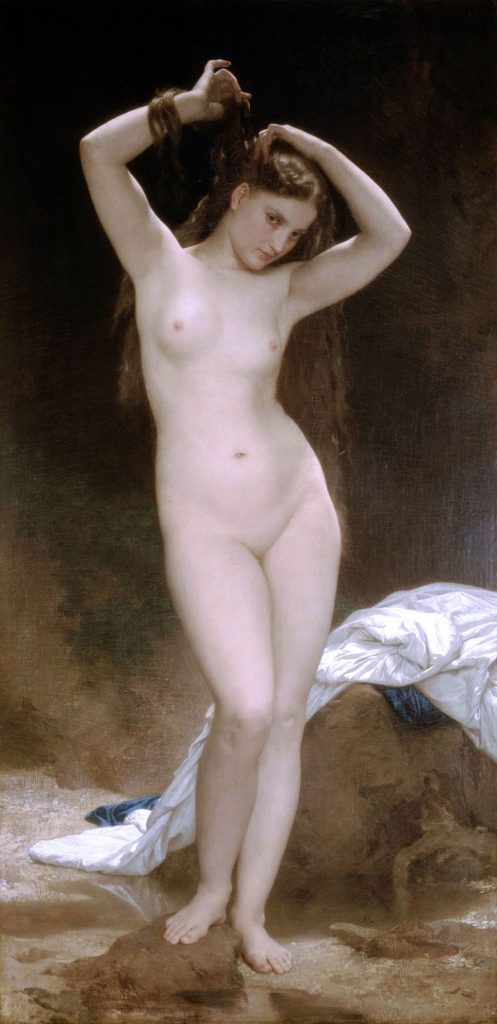
Career and Recognition:
- Bouguereau’s career as a painter flourished during the mid-19th century. He began exhibiting at the prestigious Paris Salon in 1850, and his works were consistently well-received.
- He was awarded numerous medals and honors, including the prestigious Prix de Rome, which allowed him to study in Italy for several years.
- Bouguereau’s popularity extended beyond France, and his works were highly sought after by collectors and patrons internationally.
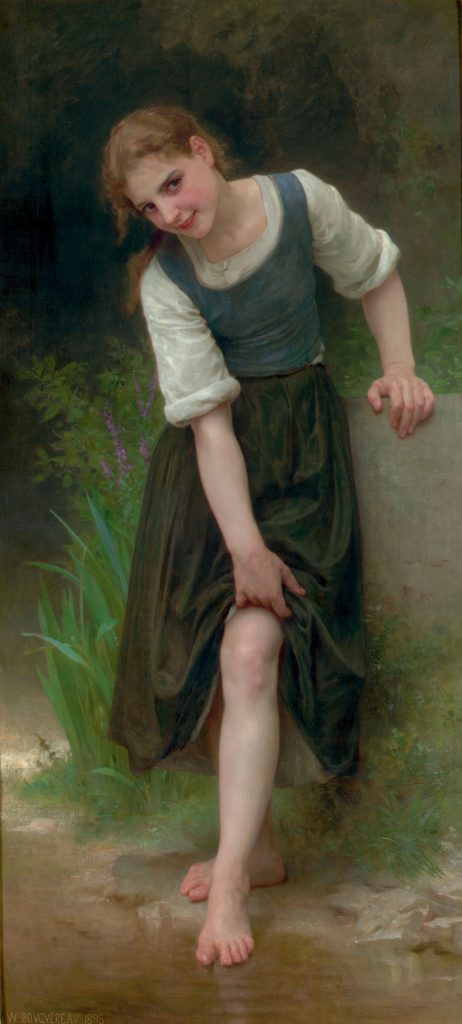
Subjects and Themes:
- Bouguereau’s paintings covered a wide range of subjects, including mythological scenes, historical narratives, biblical stories, and genre scenes.
- He was particularly renowned for his paintings of idealized women and children. These works often depicted women in graceful, tender, and emotionally expressive poses.
- His religious paintings, such as “The Virgin with Angels” and “The Madonna of the Lilies,” are noted for their spiritual and devotional qualities.
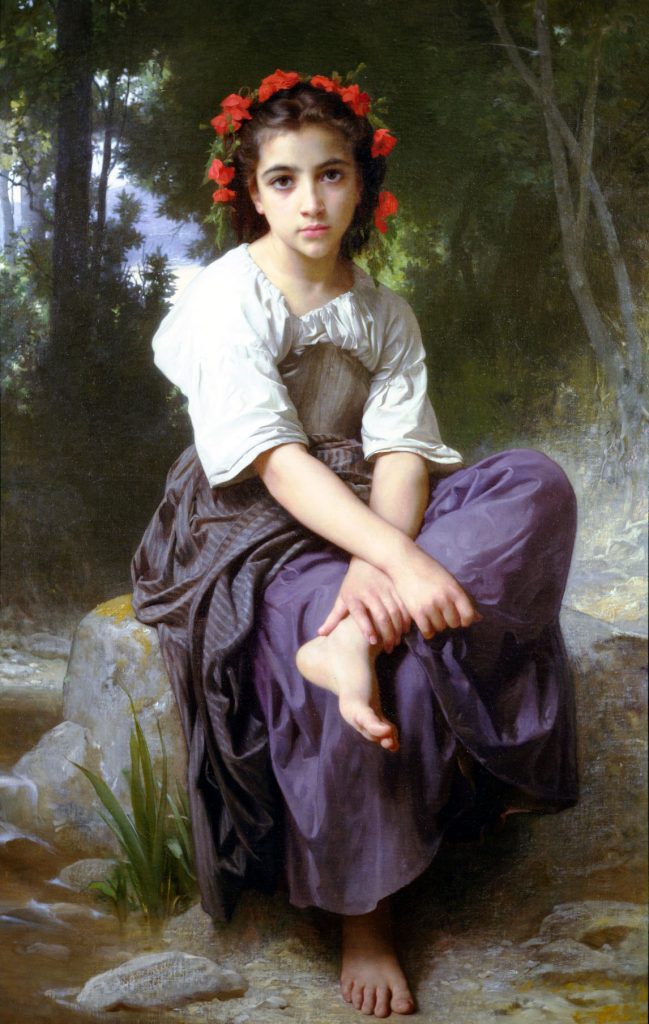
Later Life and Legacy:
- Bouguereau continued to paint and exhibit his works throughout his life, amassing a considerable fortune from his art.
- As the 19th century drew to a close, Bouguereau’s traditional academic style fell out of favor with emerging art movements, such as Impressionism and Symbolism.
- Nevertheless, he remained a respected figure in the art world, and his works continued to be admired by those who appreciated his technical skill and emotional depth.

William-Adolphe Bouguereau passed away on August 19, 1905, in La Rochelle, France. While his art went through periods of neglect during the 20th century, there has been a renewed interest in his work in recent years. His paintings are celebrated for their technical virtuosity, emotional expressiveness, and their embodiment of 19th-century academic ideals. Bouguereau’s legacy endures as an important figure in the history of academic art.
